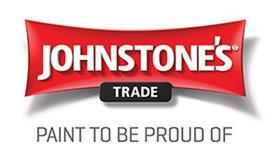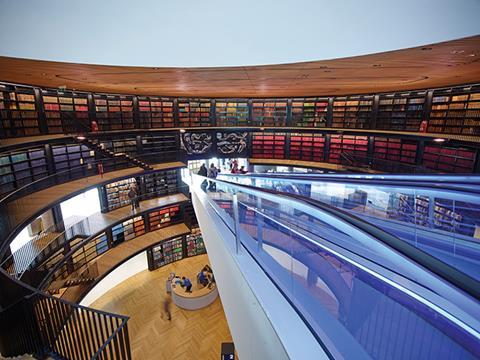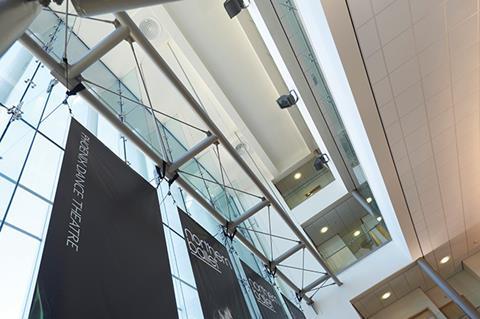Paint systems can have a major impact on the environmental performance of a project. Our latest CPD module, sponsored by Johnstone’s Trade, outlines the key factors that specifiers need to consider
How to take this module
The free continuing professional development distance learning programme from ��ɫ����TV is open to anyone who wants to develop and improve their professional knowledge. These modules can contribute towards annual CPD activity and help you to maintain membership of professional institutions and bodies.
To take this module, read the technical article above and click through to the multiple-choice questionnaire.

Once taken you will receive your results and if you successfully pass you will be automatically issued with a certificate to print for your records. This module will contribute one hour towards your CPD obligations.
DEADLINE: 22 AUGUST 2014.

INTRODUCTION
In recent years, the sustainability of paint systems has become an increasingly important consideration for specifiers. The drivers for this are many, and include the widespread use of environmental rating systems such as BREEAM, Ska and LEED, the launch of the government’s Green Deal for home improvements and the EU Ecolabel scheme (see below), as well as growing awareness of the harmful environmental impacts of some traditional forms of paint.
It is essential for paint manufacturers and specifiers to consider sustainability at every part of the paint lifecycle: from the extraction of raw materials to the manufacturing process and then to its performance in use. This CPD will examine these three stages in detail and highlight the key factors for specifiers to consider.
SUSTAINABILITY IN RAW INGREDIENTS
Paint is mainly made of three categories of ingredient: pigment, binders and solvents. These all affect product performance and ultimately the paint’s environmental impact.
- Pigments are minerals, such as titanium dioxide, clays or chalks, which are extracted from the ground by mining or quarrying. These ingredients give the paint its opacity but contribute significantly to its environmental impact due to the way they are extracted, processed and transported
- The binder holds the pigment together and contributes to the durability and lifespan of the product. It is often an artificial polymer based on petrochemicals and is therefore a significant contributor to the carbon emissions associated with paint
- Solvents are generally either water- or petrochemical-based products that influence the viscosity and spread of paint, as well as how it dries. Petrochemical solvents are a major contributor to the production of volatile organic compounds (VOCs)
VOCs
VOCS, which are also found in everyday products such as aerosols, cleaning products and fossil fuels, are a source of concern because they interact with other chemicals in the atmosphere to produce ozone and photochemical smog. High levels of solvent in paint can be detrimental to the health of tradespeople who are exposed to the product for long periods, as well as to building occupiers.
The EU decorative paint directive 2004/42/EC was introduced in 2004 with the aim of reducing VOC levels in decorative paints and varnishes. It established a framework for cutting levels, with a set of limiting values imposed from 2007, and a second, stricter set from 2010. The directive is implemented in the UK through the Volatile Organic Compounds in Paints Varnishes and Vehicle Refinishing Products Regulation SI 2004/2773.
In the UK, VOC content is measured in accordance with the standard BS EN ISO 11890-2:2006. Manufacturers should check every batch of paint to ensure that the testing requirements are met, and to confirm the VOC content is within the limits set by 2004/42/CE. BREEAM requirement HEA 9 states that all products should conform to 2004/42/CE and meet the testing requirements of BS EN ISO 11890-2:2006.
In order to guide specifiers, UK manufacturers also voluntarily provide labelling on paint products, which displays the VOC content according to the following levels:
- Minimal VOC content: 0-0.29%
- Low VOC content: 0.3-7.1%
- Medium VOC content: 8-24.1%
- High VOC content: 25-50%
- Very high VOC content: 50% or above
Alternatives to solvents
Manufacturers’ R&D departments have been developing new product formulations to offer the same performance and application characteristics as traditional solvent-based paints. This research has focused on two strands: creating water-based products and systems, and in parallel developing solvent-based products that fall within acceptable VOC levels. As a result, most manufacturers now offer 2010-compliant solvent-based products as well as water-based gloss products.
In addition to lower VOC levels, the advantages of water-based paints include:
- Reduced yellowing This makes them ideal for areas where lighting is low and for rooms where stagnant air is present due to high heating loads, such as care homes and sheltered accommodation
- Low odour They have little impact on the environment and the people within it, and reduce the inconvenience associated with leaving doors and windows open
- Quick drying Projects can be completed more quickly without compromising on performance

SUSTAINABILITY IN MANUFACTURING
Having sourced raw materials in a responsible way, it is vital that manufacturers themselves operate in a responsible way too. This is measured by the International Standards Organisation standards ISO 14001 and ISO 9000.
ISO 14001 sets out the criteria for an environmental management system. This framework is intended to provide assurance to company management and employees as well as external stakeholders that environmental impact is being measured and improved. In particular, organisations must:
- Demonstrate control over external factors impacting on their operations, thereby removing uncertainty and reducing business risk
- Demonstrate good management practices and efficient operation so that costs are controlled and resources are not wasted. This includes considerations such as documentation control, emergency preparedness and response, and employee education
- Measure and monitor performance
ISO 9000 sets out the criteria for quality management systems. It requires manufacturers to issue and communicate a documented quality policy, a quality manual and numerous other records relating to management responsibility, resource management and the measurement and analysis of products and systems. The idea is that this helps them to meet the needs of customers, other stakeholders and regulatory bodies, making them more efficient and improving financial performance. ISO 9000 is subject to external audit.

SUSTAINABILITY IN PERFORMANCE
It is now possible to manufacture paints that have a very low impact on the environment. However, if their technical performance is compromised to the point where they must be renewed regularly, the benefits can be outweighed by the environmental cost of new paint materials, labour, transport and so on.
New technologies are enabling manufacturers to produce water-based, low-VOC paints which can be applied like traditional products, and which offer high levels of durability, allowing surfaces to maintain a good finish for longer. These products are assessed in line with BS EN ISO 11998: Paints and Varnishes, Determination of Wet-Scrub Resistance and Cleanability of Coatings. Modern sustainable paints also often boast high opacity levels, which means that fewer coats, and therefore less paint, are required.
Externally, performance considerations tend to focus on weather resistance rather than mechanical durability. Modern micro-porous trim systems can significantly extend maintenance cycles on timber by allowing the escape of water vapour without disrupting the paint film.
However, larger external areas such as masonry and profile cladding, where maintenance cycles can have a huge impact on the operational sustainability of a building, may still require medium to high VOC paints. Likewise, if the paint is required to protect steel surfaces, then a high-solvent product may be more sustainable than a modern water-based alternative.
It is essential that specifiers carefully consider the performance requirements of the paint prior to selection. Does it need to protect against corrosion? Is durability the main consideration? Or are aesthetics more important (in which case a solvent-based product may not be necessary)?
The health implications of the paint may also be a major consideration. Whereas a durable solvent-based gloss may have traditionally been used for doorways along the corridors of communal apartments, the low odour of water-based alternatives could be the overriding performance factor in poorly ventilated areas. Health and safety data sheets are a key tool for specifiers when choosing products.
Other important documents that specifiers should be aware of include independent accreditation from organisations such as the British Board of Agrément, BRE and the Paint Research Association. The EU Ecolabel also helps specifiers to identify products and services that have a reduced environmental impact throughout their lifecycle, from the extraction of raw materials through to production, use and disposal. This is a voluntary label established by the European Commission and recognised throughout Europe. The RICS includes the EU Ecolabel as a performance guide in its Materials ID M14 for Paints - Fit-Out Benchmark & Assessment Tool, part of the organisation’s Ska environmental rating system.
Colour
Another aspect of paint performance that needs careful consideration from a sustainability perspective is colour. Part M of the ��ɫ����TV Regulations has focused on the importance of light reflectance values (LRVs) in terms of helping visually impaired people to distinguish between surfaces. With black representing an LRV of 1 and bright white representing an LRV of 100, Part M stipulates that there should be a difference of at least 30 points between the LRV of key adjoining elements, to help building users to distinguish between walls and door frames or skirtings and floors, for example. But the LRV of paint also has an energy-efficiency role to play, as a wall or ceiling colour with a high LRV can help to reduce lighting requirements, and therefore energy consumption.
It is important to note too though that too pale a colour can contribute to the need for cleaning in high traffic areas. As noted above, increased maintenance is an important factor when assessing the environmental cost of a product.

How to take this module
The free continuing professional development distance learning programme from ��ɫ����TV is open to anyone who wants to develop and improve their professional knowledge. These modules can contribute towards annual CPD activity and help you to maintain membership of professional institutions and bodies.
To take this module, read the technical article above and click through to the multiple-choice questionnaire.
Once taken you will receive your results and if you successfully pass you will be automatically issued with a certificate to print for your records. This module will contribute one hour towards your CPD obligations.

DEADLINE: 22 AUGUST 2014.
Privacy policy
Information you supply to UBM Information Ltd may be used for publication and also to provide you with information about our products or services in the form of direct marketing by email, telephone, fax or post. Information may also be made available to third parties. UBM Information Ltd may send updates about ��ɫ����TV CPD and other relevant UBM products and services. By providing your email address you consent to being contacted by email by UBM Information Ltd or other third parties. If at any time you no longer wish to receive anything from UBM Information Ltd or to have your data made available to third parties, contact the Data Protection Coordinator, UBM Information Ltd, FREEPOST LON 15637, Tonbridge, TN9 1BR, Freephone 0800 279 0357 or email ubmidpa@ubm.com. View our full privacy policy at






















1 Readers' comment